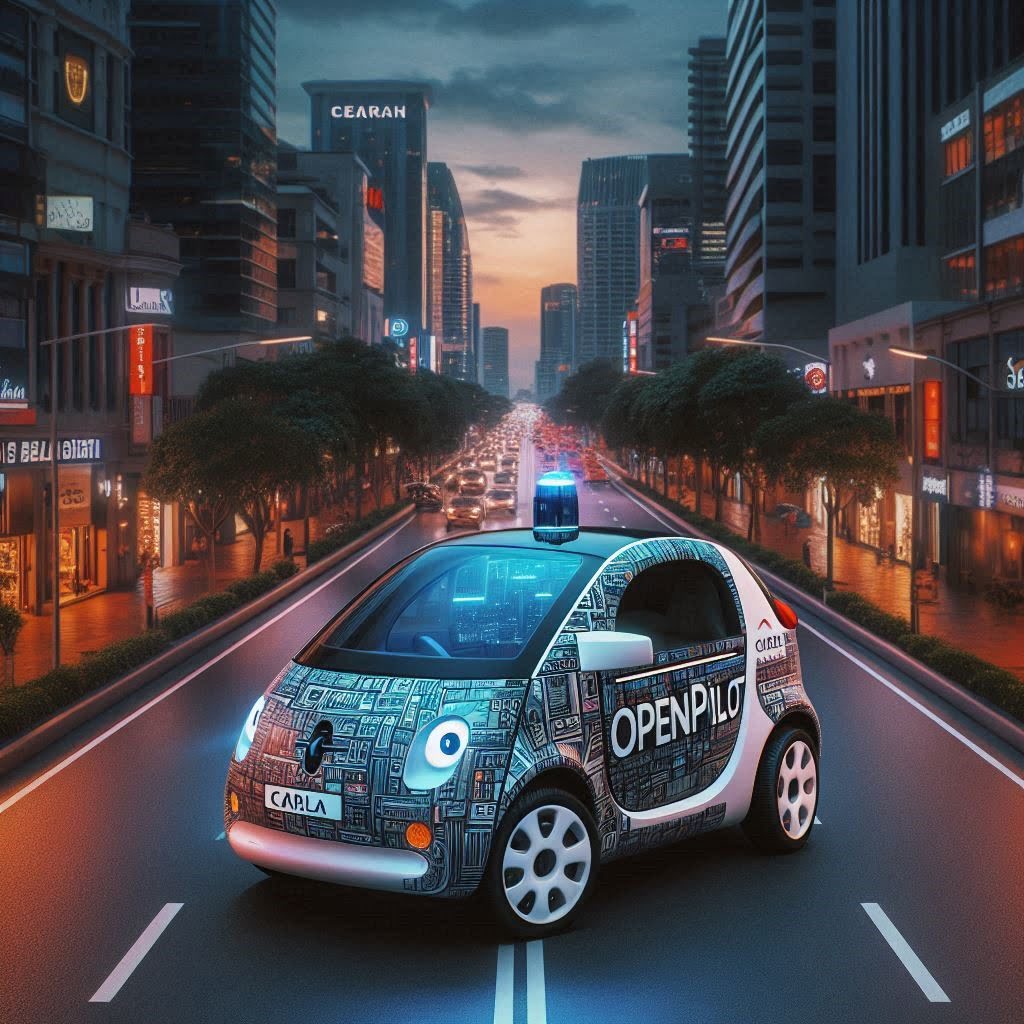OpenPilot and CARLA Integration for Autonomous Vehicle Simulation

Introduction
This case study explores the integration of OpenPilot, an open-source software for autonomous vehicle control, with CARLA, a high-fidelity simulator for autonomous driving research. The goal of this integration, carried out for a South Korean company, is to simulate and test OpenPilot’s capabilities in a controlled virtual environment using CARLA. This project aims to provide a comprehensive platform to evaluate autonomous driving algorithms in diverse scenarios, leveraging CARLA's simulation capabilities and OpenPilot's control systems.
Objectives
The primary objectives of the integration include:
Simulation of OpenPilot in CARLA: Enabling OpenPilot to control a virtual vehicle in CARLA.
Sensor Data Integration: Simulating camera, IMU, and GPS data from CARLA and feeding it into OpenPilot.
Control Feedback: Sending control commands such as throttle, brake, and steering from OpenPilot to the CARLA vehicle.
Testing and Validation: Validating OpenPilot’s performance in a variety of driving scenarios, including lane keeping, adaptive cruise control, and emergency braking.
Key Components
1. CARLA Simulator
CARLA provides a realistic virtual environment that includes dynamic weather conditions, road layouts, and traffic. It supports advanced sensor simulations such as cameras, GPS, and IMUs, making it a perfect tool for testing autonomous driving algorithms.
2. OpenPilot
OpenPilot is an open-source software used for autonomous vehicle control. It enables features such as adaptive cruise control, lane-keeping, and automated lane-centering by processing real-time sensor inputs like camera feeds, IMU data, and GPS coordinates.
Integration Workflow
1. Initialization
CARLA is initialized by setting up a virtual environment and loading a specific town or map.
A vehicle is spawned at a predefined location, and sensors such as a camera, IMU, and GPS are attached to it.
OpenPilot’s internal messaging system is initialized to handle the communication between the vehicle, sensors, and control systems.
2. Sensor Data Simulation and Streaming
Camera: RGB images from CARLA’s virtual camera are processed and sent to OpenPilot for lane detection and object recognition.
IMU: The accelerometer and gyroscope data are simulated and provided to OpenPilot to monitor vehicle dynamics.
GPS: Real-time vehicle position, speed, and orientation data are sent to OpenPilot to assist with navigation.
3. Control Feedback Loop
OpenPilot uses the sensor data to compute control commands such as throttle, brake, and steering.
These control commands are applied to the CARLA vehicle.
The system ensures smooth transitions between manual and autonomous control modes.
4. Continuous Simulation Loop
The entire simulation runs in a loop with CARLA's environment ticking at a fixed time step (e.g., 0.05 seconds).
Sensor data is streamed continuously to OpenPilot, while control commands are applied to the vehicle in real time.
Key Features of the Integration
1. Dual Camera Support
The integration supports both wide and narrow field-of-view cameras, enhancing OpenPilot’s perception capabilities.
The camera data is used for lane detection, object recognition, and driving assistance.
2. Manual and Autonomous Driving Modes
The system allows users to seamlessly switch between manual driving (using a joystick or keyboard) and OpenPilot's autonomous driving mode.
Control commands are rate-limited for smooth transitions between modes.
3. Realistic Vehicle Dynamics
CARLA’s vehicle physics are fine-tuned to mimic real-world behavior.
Parameters such as mass, torque, and steering ratios are adjusted to enhance the realism of the simulation.
4. Fault Tolerance
Mechanisms are in place to ensure the simulation restarts gracefully in case of any errors or connection issues with CARLA.
Challenges and Solutions
1. Sensor Data Synchronization
Challenge: Maintaining synchronization between sensor data streams (camera, IMU, GPS) and OpenPilot’s processing loop.
Solution: CARLA’s synchronous mode and fixed time steps were used to ensure consistency across data streams.
2. Control Latency
Challenge: Minimizing delays between OpenPilot’s control commands and their execution in CARLA.
Solution: Optimized control loops were implemented, and rate-limiting was used to smooth command transitions.
3. Realism vs. Performance
Challenge: Balancing high-quality graphics and sensor simulation with real-time performance.
Solution: The system includes options to toggle between high-quality and performance-optimized modes based on hardware capabilities.
Use Cases
1. Algorithm Testing
Developers can test OpenPilot's control algorithms in a safe, virtual environment.
Scenarios such as lane changes, obstacle avoidance, and emergency braking can be simulated and validated.
2. Sensor Fusion Validation
The integration enables the validation of sensor fusion algorithms by feeding simulated data (camera, IMU, GPS) from CARLA into OpenPilot.
3. Driver Monitoring Simulation
Simulate driver behaviors to test OpenPilot’s ability to detect and respond to driver inattention or emergencies.
4. Educational Applications
The system serves as an educational tool for teaching concepts related to autonomous vehicles and sensor integration.
Results
The integration of OpenPilot with CARLA successfully demonstrated the feasibility of using a simulation-based approach for testing autonomous vehicle control algorithms. Key outcomes include:
Smooth transitions between manual and autonomous driving modes.
Accurate processing of camera, IMU, and GPS data for tasks such as lane-keeping and adaptive cruise control.
Effective handling of complex driving scenarios, including emergency braking and obstacle avoidance.
Below is an image from the CARLA simulator showing the car in motion
Conclusion
This case study highlights the successful integration of OpenPilot and CARLA to create a powerful simulation platform for testing and validating autonomous driving algorithms. By leveraging CARLA’s realistic simulation capabilities and OpenPilot’s advanced control systems, this integration provides developers with a safe and versatile environment to refine and enhance autonomous vehicle technologies. This project demonstrates the potential of combining open-source tools for advancing autonomous driving research and development.
